DREAD TEMPLAR EARLY ACCESS REVIEW – ONE HELLUVA GOOD TIME
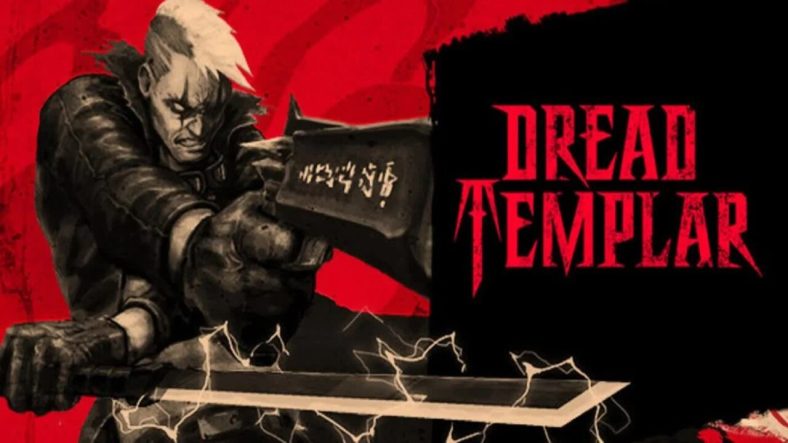
Developed by T19 Games
Published by 1C Entertainment
Available on PC
MSRP: $14.99
Dread Templar kicks ass. That’s it. That’s all that needs to be said. You like retro visuals? Buy it. You like shooters? Buy it. You like good – nay, awesome – music? What the hell are you waiting for? Buy it!
For those of you who need more than a single paragraph to be convinced, Dread Templar is a recent entry in the popular Retro Boomer Shooter category, a genre that takes inspiration from the fast-paced FPS games of the 1990s like Quake, Duke Nukem, and Doom. I say ‘popular’ here rather than ‘oversaturated’, although it’s a pretty close-run thing at this point. Fortunately, Dread Templar kicks sufficient levels of ass to set it apart from the competition. Most importantly, you don’t have to have any great nostalgia for those ’90s games to appreciate what’s on offer here. I certainly didn’t, and it didn’t stop me from grinning like a maniac all the way through its roughly four-to-five hour-long campaign.
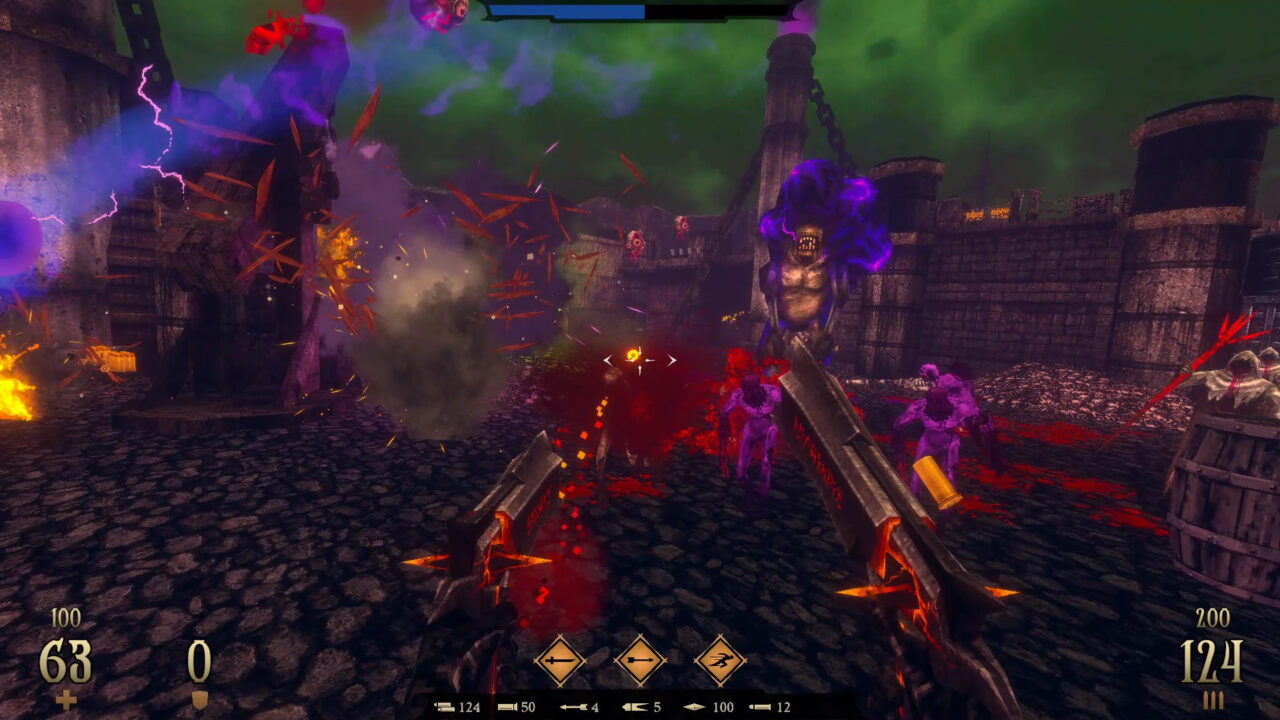
The setup is about as no-frills as you can get. After a quick tutorial, a snippet of text tells you all you need to know; you are the Dread Templar, you were wronged, you made a pact with an entity to get to the demon realm, and now you’re there you’re going to avenge yourself by reducing everything in your way to a fine red mist. Charles Dickens this is not, and nor does it need to be.
Controls and gameplay are straightforward. Your average speed is that of a sprinting gazelle hopped up on enough steroids to floor a Russian athletics team as you fight the denizens of hell with a steadily increasing arsenal of weaponry. It’s a fairly standard lineup of weapons – dual pistols, SMGs, shotguns, rocket launchers, and so on – with a few minor twists. Weapons of the same category go in the same slot, and you can switch between them with a click of the right mouse button. This is nearly instantaneous, so if you’re up close and personal, say, you can whip out the double-barrel shotgun to deliver a couple of quick blasts before switching back to the pump shotgun without having to reload.
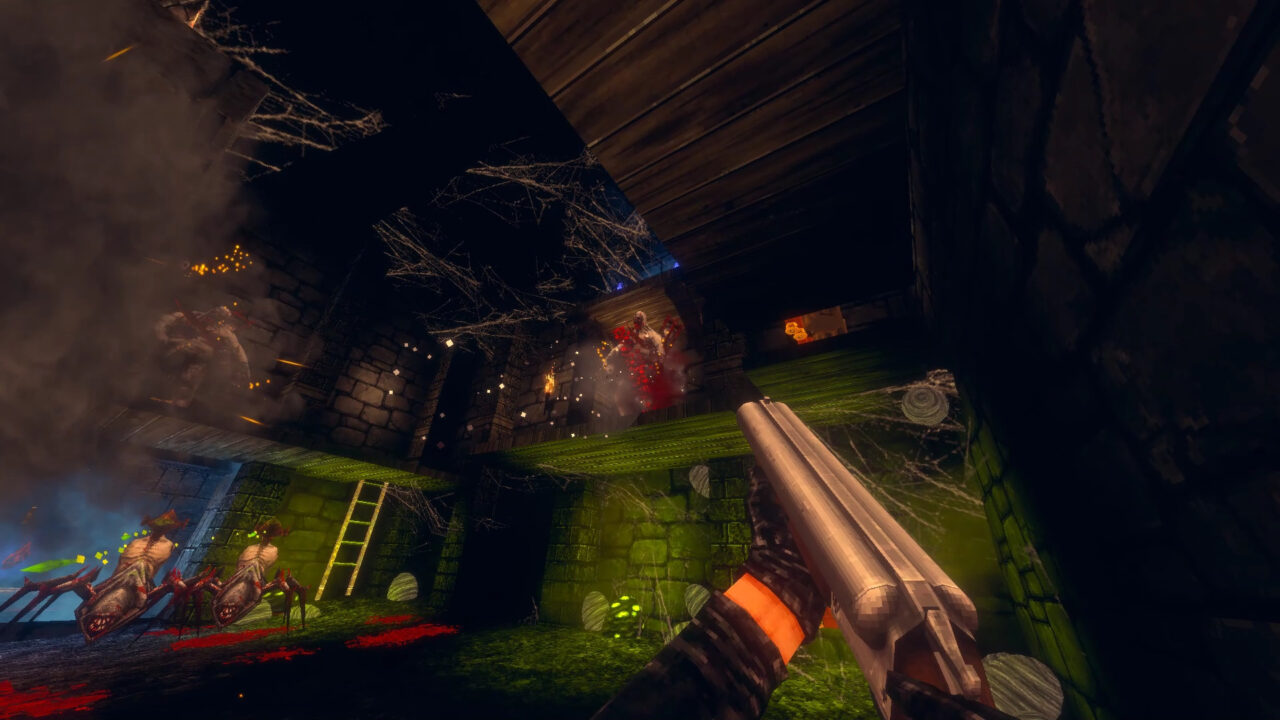
There are also a couple of unique weapons. You have a pair of starting dual katanas that can be turned into a throwing javelin, and later on in the game, you’ll unlock a wrist-mounted stun mine launcher that’s good for buying some space. None of it’s really revolutionary, but the models, animations, and sound design of every weapon all combine to make each feel meaty and impactful. The enemies themselves are all suitably grisly as well, looking like things from a Hellraiser and Killing Floor mashup, and varied enough in terms of their gameplay function that each puts a fresh spin on combat encounters.
It seems that Dread Templar has taken a few pages of out Doom Eternal’s book. There’s a degree of ammo management in fights, and though you won’t be hopping from enemy to enemy looking to score your next bullet fix, you have to make sure you’re constantly collecting ammo during traversal lest the next fight leaves you high and dry. There’s also a dash mechanic that reminded me so much of Doom Eternal that I was often getting caught out by the fact that it wasn’t a double-dash feature. If this sounds like I’m criticizing Dread Templar for being derivative, I’m not; it’s a testament to how well it does what it does that its mechanics evoke that of a game with an exponentially bigger budget.
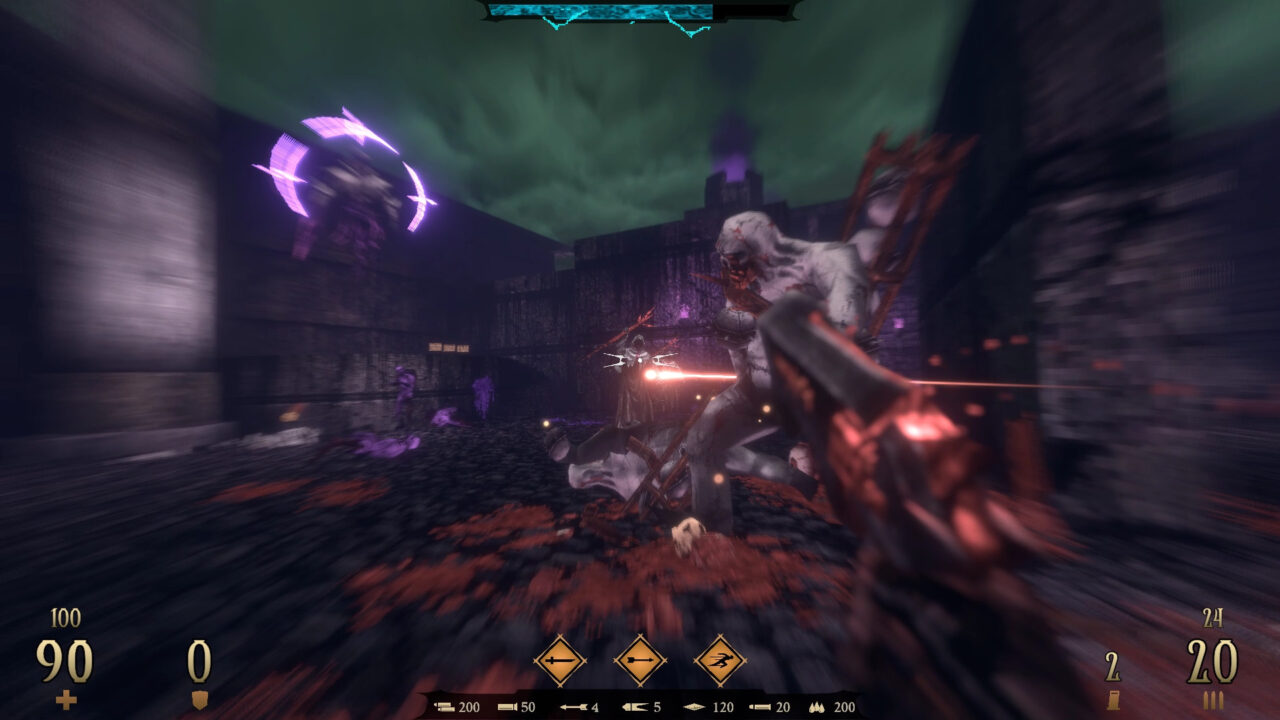
But all of this is just beating around the bush, because it’s the music that’s where it’s at. And Good God, the music. Dread Templar features an absolutely badass thrash metal score, its screaming guitars and driving, relentless drum beat hitting you from the moment you boot up the game. So well does it complement the on-screen action that I sometimes wondered whether it wasn’t orchestrating gameplay a la BPM: Bullets Per Minute. Saying ‘I stopped several times just to listen to the music’ sounds like a cliché – and it is – but it’s one that’s actually true here.
There’re really only a few minor nitpicks to be had. One thing is the upgrade system, which revolves around slots for the character and each weapon. Upgrades can be found by exploring, and are pretty standard fare (more ammo, greater damage, et cetera), whilst the slots themselves are unlocked by finding special blood crystals. Whilst the game showers you with upgrades, it’s a miser when it comes to blood crystals, and could have done with a being more generous. It’s also a shame that you can’t start a New Game + on different difficulties with all your previously acquired upgrades, and that repeat playthroughs don’t give you all your weapons off the bat. Oh, and enemies can get you even when you’re at a save spot or in supposedly safe upgrade rooms.
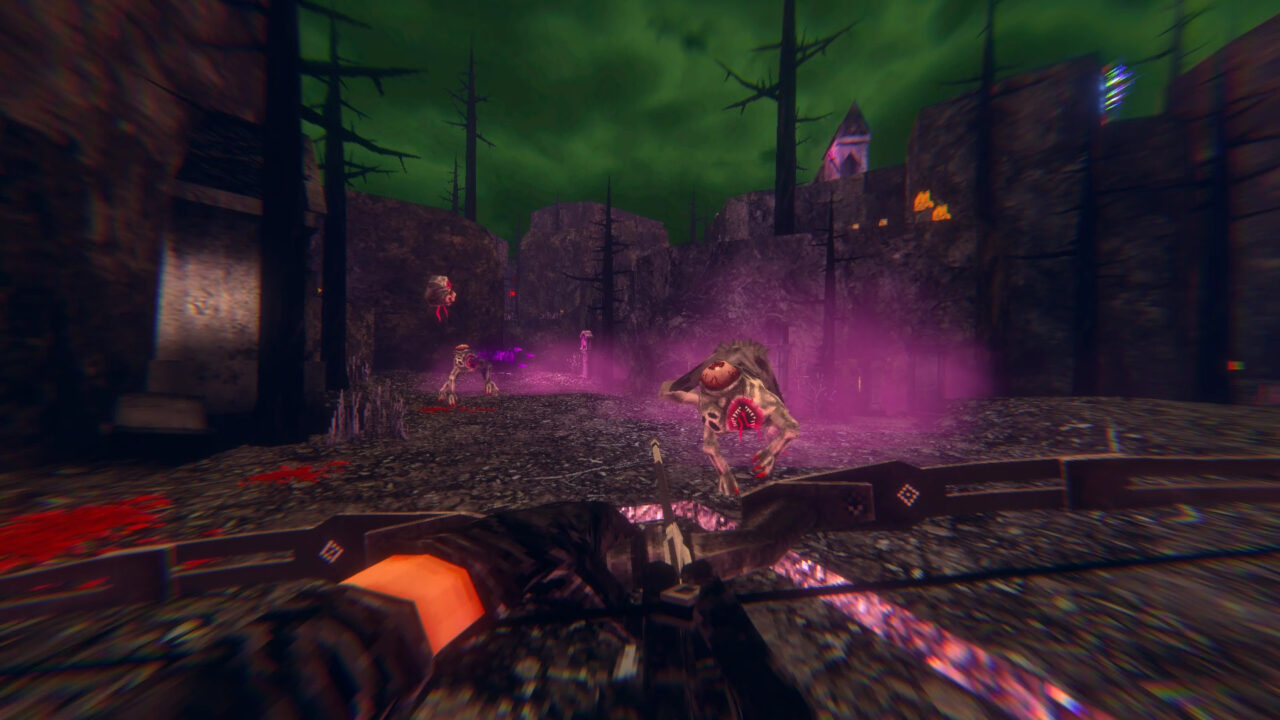
But these are just quibbles that don’t impact the otherwise rock-solid foundation. Dread Templar is a game with an aggressively well-polished core both in terms of its primary gameplay loop and technical performance. Whilst the phrase ‘Early Access’ still retains the faint stigma of janky, bug-riddled messes, that couldn’t be further from the truth here. The game runs at a butter-smooth framerate, and I don’t think I encountered a single glitch or bug my entire playthrough. Then again, it may have been because everything outside the music and muzzle flashes was pretty much a gory paste by then.
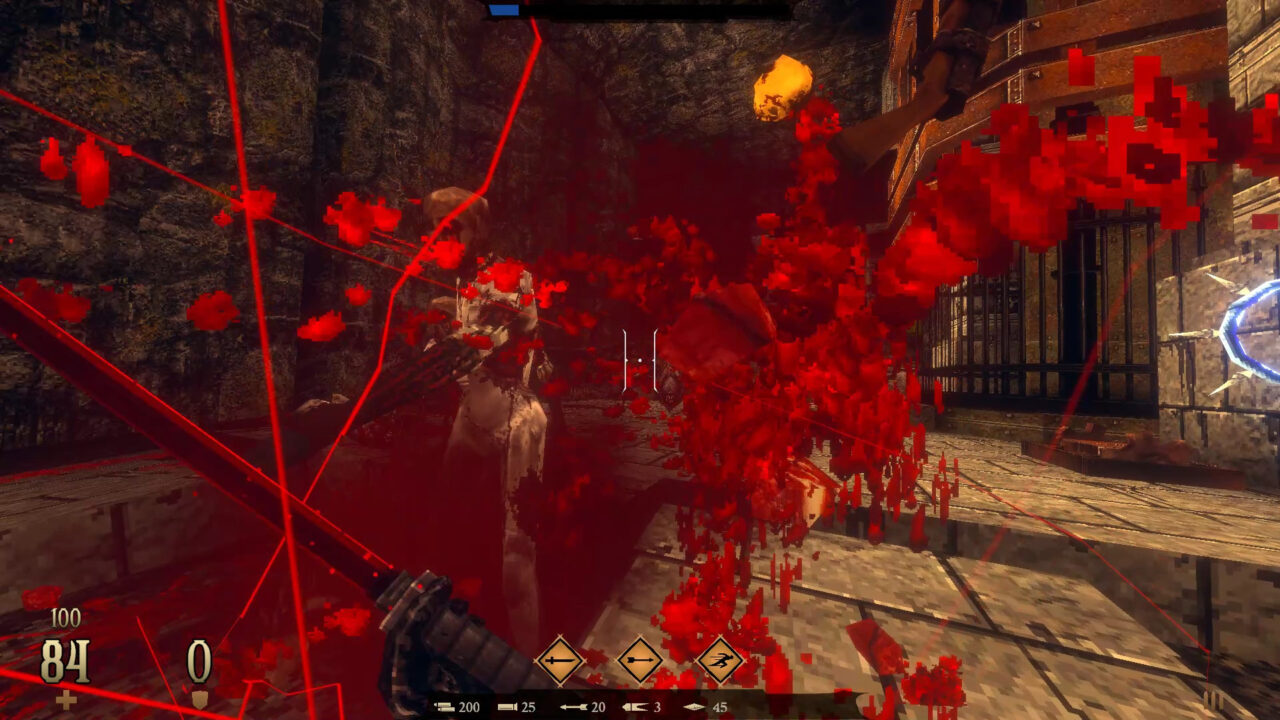
With the fundamentals down pat, all Dread Templar needs to prove for its final release is that it can keep the momentum going. Games like these live and die on being able to chuck new stuff at the player; new challenges, new enemies, new guns. If it manages to do this and keep thing interesting, there’s no doubt the completed Dread Templar will be just as awesome as it is in the current state. In the meantime, I’m going back to listen to a bit more of that soundtrack.
Doof doof doof doof doof doof….
Categorized:Reviews

